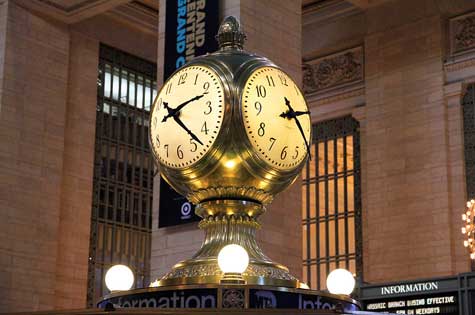
“Meet me by the clock.”
For generations of New Yorkers that’s been a not-so-secret code leading to a rendezvous point in one of the most highly traveled buildings in the City, the grand concourse of Grand Central Terminal. How many trysts have begun there? Enough that there’s a “kissing room” not far away. At least one group of saboteurs planned to meet there and keep the US out of the Second World War, but how many other connections were made under the opalescent faces of that legendary timepiece?
That you may never know, but if you want to learn the many secrets of Grand Central Terminal, get a private tour with Danny Brucker, their resident expert. Recently, I met a small group of mystery writers under the clock for one of Danny’s tours. Danny is a bespectacled human tornado sporting rolled up shirtsleeves and workman’s slacks, the thick-soled brogans of a man who spends his day on his feet, and the lightning patter and quirky mannerisms of a character who marched out of a Donald Westlake novel. Placards of old photos under his arm, jabbing his finger at minute details on the ceiling, he informs us that there’s a $20 million jewel in the room that no one’s ever tried to steal; that the train schedule above the ticket booth is wrong; that there’s another error, as big as the concourse itself, and there’s a secret staircase right under our noses. And of course, he’ll reveal all the secrets, but not until the end of the tour.
For a second I thought he was selling time shares. But no, that’s Danny’s way. The building is living history, working history. In operation since 1913, a half million people walk through it every day. The trains run as smoothly as that famous clock. And their emergency planning is second to none. On 9/11, when the bridges and tunnels were shut down, the airplanes grounded, the PATH train crippled, the GCT had every passenger out of the city by 5 P.M. During the Northeastern U.S. blackout of 2003, they evacuated five thousand passengers on stalled trains from dark tunnels in under an hour. Touring this operation behind the marble skin, I felt like a mouse exploring the insides of a giant robot. The roar of human activity whooshes through the concourse like the city’s blood coursing through concrete veins, and the thunder of the trains below is its ironbound heartbeat.
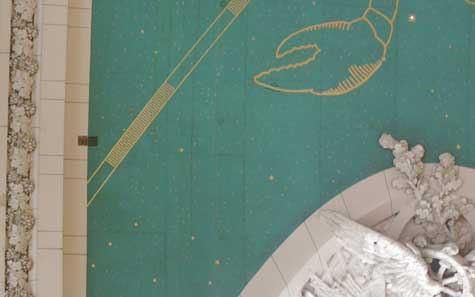
If you can’t get behind the scenes, here’s some interesting tidbits about the concourse. If you look up at the starfield with its constellations, scan it for a little rectangle that’s darker than the rest. When they restored the building in 1998, the marble was stained nearly coal-black. Rail dust? Diesel soot? No, when they analyzed it, it was cigarette smoke. Central Park may be known as the Lungs of New York, but the ceiling in the grand concourse of Grand Central Terminal, that was the lung cancer of New York. Of course, now you can’t smoke there, so the ceiling will stay clean for another hundred years. Not far from the lung cookie on the ceiling, there’s a gouge made by a rocketship.
Yes, really. In 1957, after Sputnik orbited the Earth and the Space Race began, NASA wanted to show off America’s answer. The Redstone rocket. Unfortunately, the rocket was six inches too long to fit in the concourse, even at an angle, so they punched a hole in the ceiling. And they never repaired it. What nerve. (It’s a great story, but space historian Amy Shira Teitel says looking at the heights, the rocket would’ve easily fit, but a hole was drilled into the ceiling so a stabilizing cable could be bolted in to hold the Redstone Rocket upright.)
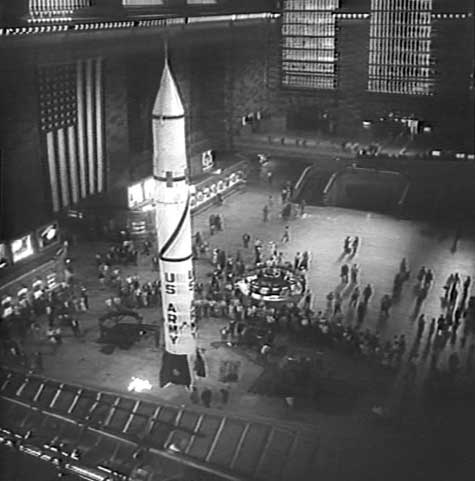
Danny has enough stories to fill a dozen novels, and he tweets them at a nonstop pace as he Pied-Pipers us through the Terminal. First stop, the Lost & Found. It doesn’t sound very exciting, but they operate just as efficiently as the conductors and computerized rail systems. The lost and found office has an 80% return rate. Everything from priceless violins to an urn full of cremains has been returned to its rightful owner. Thousands of umbrellas, iPods, laptop bags. All are tagged and numbered, searched and the owners tracked down by indefatigable sleuths. They box them by train, row, seat. And they’ll ask you when and where you left it, so don’t think of marching down there to collect a free iPad! Lose a phone, and they’ll get it unlocked by the police, and call your recent contacts. And if you’re an urn full of cremains, well… there’s a story behind that one.
‘The vase has a name on it, so simple enough, phone book, call the owner. Right. Who shows up for the vase? A little old lady, but before she’ll pick up her property, she wants to thank them for returning it. 'You see,' she says, 'my husband rode your train every day. And every Friday he missed his stop, he fell asleep on the train, so he said, and so he thought I believed. He was going to see his chippy up in Westchester! So I let him have one last ride, this time he really was asleep.’ (I paraphrase. Forgive me, Danny, I know I can’t tell it half as good as you…)
They also find the occasional prosthetic limb, but that doesn’t mean the water fountains have the healing properties of Our Lady of Lourdes, but a lot of veterans take the train to the VA hospital to get fitted. If they find the new limb isn’t comfortable before it’s broken in, they take it off for the ride home… and well, it’s as easy to forget a leg as an umbrella when it comes down to it.
Those lost-and-found sleuths and their in-terminal police station also foiled a brazen robbery, when three gunmen donned masks and robbed every passenger of a train car. With the victims unable to ID the gunmen, the police instead tracked down witnesses on the platform who saw them without their masks. How? By tracing every receipt from sales on the platform. A combination of footwork and electronic investigation showed that robbing a train is no saner than when Butch and Sundance were in business.
There was a time when the police had to watch for more than thieves, when a bucket of sand might have gotten you shot on sight. During the Second World War, 80% of the troop movements in the northeast went through the Terminal, and the Third Reich knew it. They sent four saboteurs by submarine, and tasked them with infiltrating the engineering room, where massive rotary converters powered the electric trains. These machines spun so fast that a few handfuls of sand tossed into the works would melt into glass and render them inoperable in seconds. The saboteurs were captured, their plot unveiled, and guards were ordered to shoot anyone smuggling sand onto the machine level on sight.
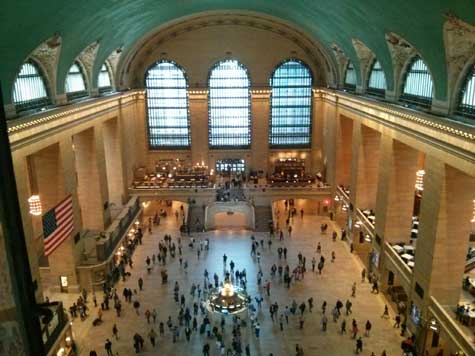
Today the generators are less fragile, but you can still find yourself at gunpoint if you wander behind the scenes on the right day. Danny took us to the glass catwalks above the concourse (where that lovely photo was taken) and to a view of the control room, but the operating manager of the Terminal once took the wrong elevator and found himself held at gunpoint for 45 minutes.
“This is MY terminal!” he complained.
“Not today,” said the armed guard.
The unnamed agent of the Secret Service was correct. The Terminal still serves as a backup escape route when the President visits New York City, and stays at the Waldorf Astoria hotel. That’s no secret. Any time he’s in town, you’ll find the entrances to this secret part of the terminal under constant guard. The actual location of the enormous private elevator was so secret that the terminal manager didn’t know about it, and when he pressed a button to see where it went, he found out the hard way. The President was in town.
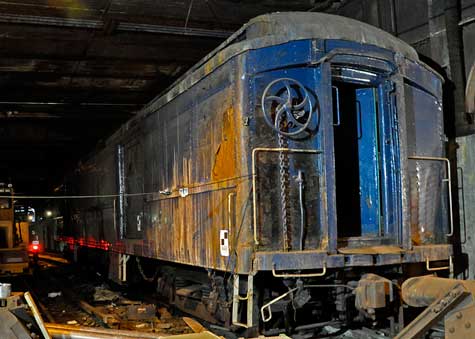
The elevator was originally built for FDR, not only to protect him from assassins, but also to protect his polio and wheelchair bound state from the public, especially during wartime. The public would see him in his armor-plated Pierce Arrow limousine, which would disappear into the terminal into the freight elevator. From there he could exit to the nearby Waldorf Astoria, and when he left town, the procedure was reversed. And in case of emergency, a special armored rail car was built, with the air vents doubling as gun ports, and uniquely built wheel trucks that dampened lateral movement. A little side to side shimmy on a train is expected, but in FDR’s case it would unseat him from his wheelchair.
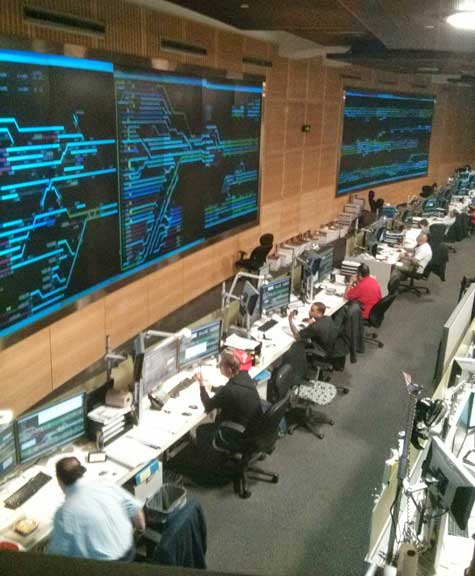
We saw the Situation Room and a beautiful view from the catwalk, with the concourse on one side and Park avenue on the other, but we didn’t get to visit Secret Sub-Basement M42, where FDR's train resides. It’s as large as the grand concourse and not on the blueprints, but someday I hope it will be open for tours. You’d think such a train belongs in a museum—and the FDR museum sure wants it—but it remains underground at Track 61, the secret platform built for its purpose. Dismantling the train car would be a monumental expense. (I didn’t ask Danny how the train was ever supposed to leave the terminal if it can’t leave now. My guess is that after the war the tracks were removed). A pity, because I’m sure the inside of the car would be something to see. Anyone wanna kickstart this?
Back at the concourse, under the clock, Danny told us the answers to his riddles, exactly as promised. Rather like the end of a drawing room mystery. So where’s the $20 million dollar gem? It’s the clock itself. I gave you a hint back there when I called it opalescent; that’s not poetic. It’s tuned to the Atomic clock, but its faces are made of polished, high-grade opal, which Sotheby’s has valued at $10-20 million. Not sure how much of that is because of its history, but that’s one big clock and a lot of opal. So it could be raw value. As for the mistake in the train schedules—those are in your favor. The times are a minute earlier than when the train actually departs, so when you’re running late or procrastinating, or stuck behind a mook on their cell phone, the conductor can wave and tell you to slow down, you’ve got a minute before the train leaves. And it gives them a minute’s leeway, for any delays.
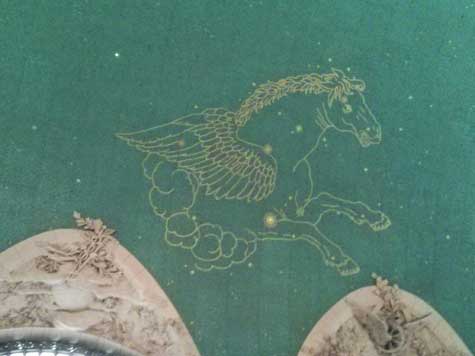
As for the mistake that’s as big as the concourse itself? Look up. The starfield, that glorious palette of the universe, immortalized in Winter’s Tale by Mark Helprin (I’ll always think of the horse as Athansor) is…backwards. Whoopsie? The Vanderbilts, who funded the construction, were mortified when an astronomer told them of the mistake. Their PR people covered it up, by saying that we’re seeing the heavens from “God’s perspective.” I hope they paid well for that bit of hooey, it’s a good one. The muralists seem to have generated a mirror image by referring to a model lying on the floor when they painted the ceiling, instead of holding the model over their heads and looking up at it. But only an astronomer would notice. I wonder if it irks Neil Degrasse Tyson? Unless you’re following the north star, you should find your train without a problem. And if you need a compass, there’s one on top of the big clock. But you should just ask at the information booth. Which is where the secret stairwell is. How else would they get in there? There’s no door to the circular booth! They enter from one level below.
Right!
Thomas Pluck writes unflinching fiction with heart. He is the author of Blade of Dishonor, an action thriller spanning Shogun-era Japan to WWII, and the editor of Protectors: Stories to Benefit PROTECT, an anthology of crime fiction for charity. You can find him on Twitter as @thomaspluck.

That old tale re FDR and his private elevator is false. The track 61 platform was constructed well before the Waldorf was built and there’s no evidence FDR ever used it. Full story/history here http://www.columbia.edu/~brennan/abandoned/gct61.html
Fascinating! I’m envious.
Good stuff Thomas. It’s an amazing place for sure.
Thanks for sharing.
Great post. And of course as a “born and raised here, lived here all my life” New Yorker I never took a tour of Grand Central–sounds like I missed out on the fun.
Sorry, I posted a link to a tour, but it was out of date.